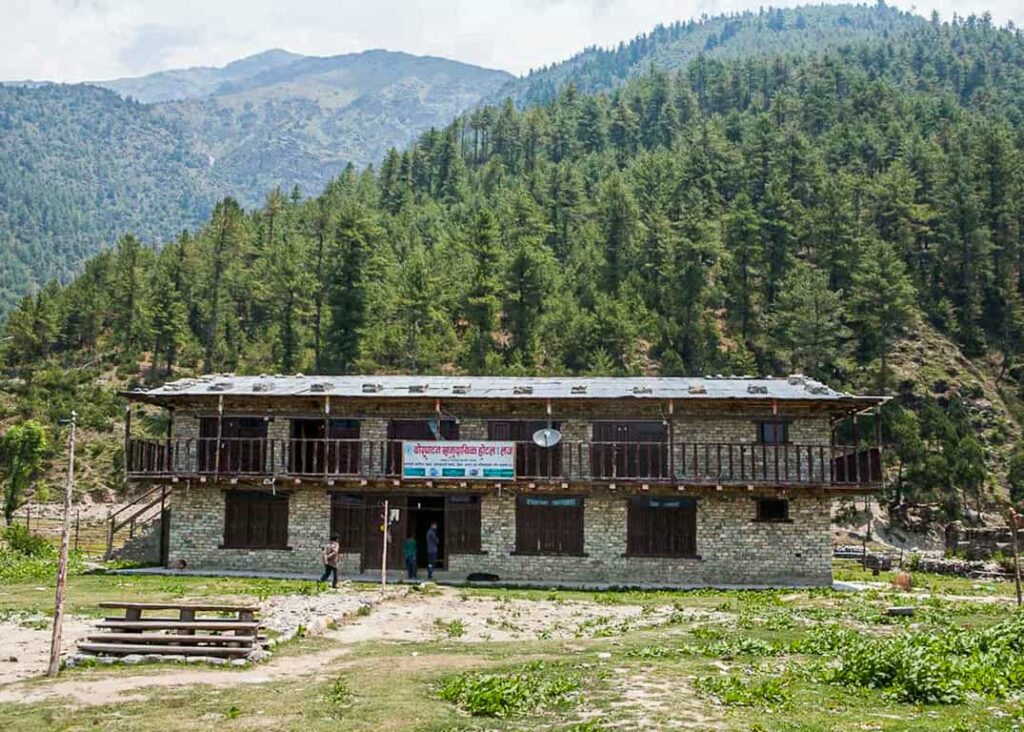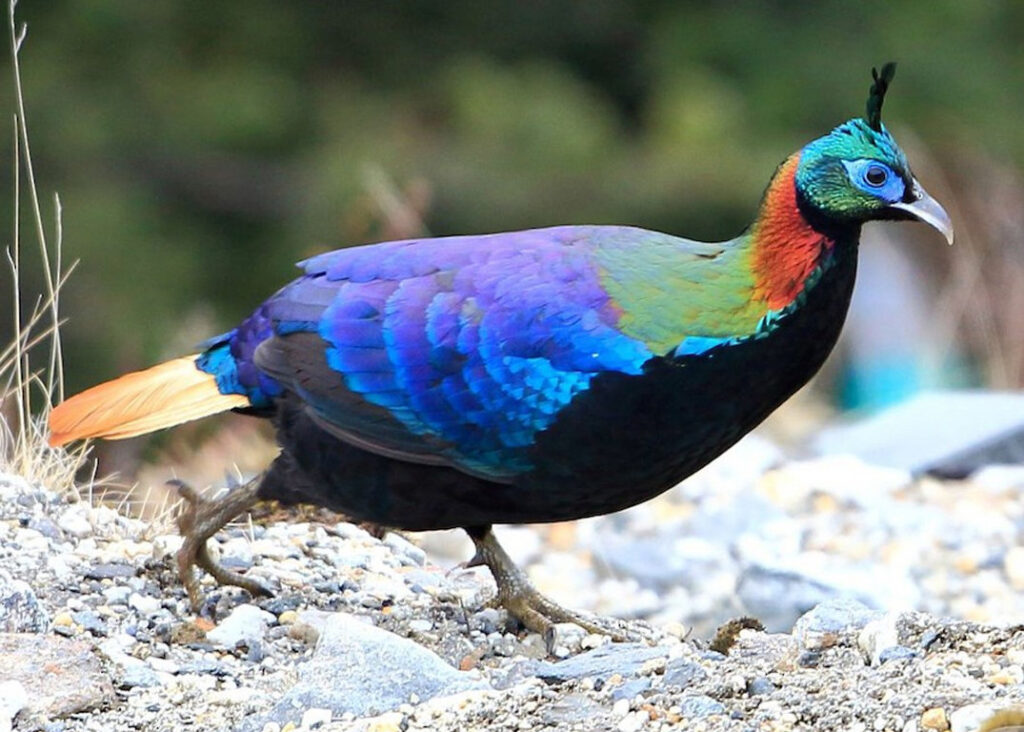Dhorpatan hunting reserve is the only hunting destination in Nepal. It is surrounded by ‘DHOR’ or marshlands. The reserve area was constructed with the aim of protecting some of the important species of Nepal. It was established in 1987. It covers an area of 1325 sq km in the western part of Nepal in the Dhaulagiri Himal range which is composed of woodland marshlands and flat meadows.
Dhorpatan National Park takes to the western edge of Nepal the part is untouched by modernity as it is decorated by nature. It is located in the southern part of Dhaulagiri Mountain. it is the sole hunting reserve in Nepal and it is located in the districts of Rukum, Rukum Baglung, and Myagdi. The wildlife reserve enables restricted hunting which is a never never-ending nirvana for eager hunters.
Dhorpatan Hunting Reserve Trek
It is a short and moderate trek that requires technical skills. The lower way of the trek are marked by lush green forests while the higher way of the trek is identified by the rugged and rocky landscape. The trek is remote but the journey is not particularly challenging. The trek is suitable for anyone with a moderate level of fitness and emotional stability.
The travelers do not need to be experienced or professionals to complete the trek. It is a moderate trek but with the proper planning and preparation, anyone can embark on this journey. Safe from the altitude is the most important during this trek.

The villages surrounding the reserve have sheer beauty, interesting kham magar culture, the profusion of animals, and bird life. You can experience the serenity of witnessing nothing but the chirping birds as you wander through the lush woodland. Also, the blossoms of rhododendrons seem like walking through an enchanting forest filled with magic. Dhorpatan treks take you to remote villages through lush green forests that are habitats for different wildlife.
How to get there
Public bus service is available from Kathmandu to Burtibang via Baglung Bazar, jeep is available from Burtibang to Dhorpatan. Next route is Tansen-Tamgash Gulmi Burtibang also. Visitors can reach by foot from Beni Myagdi to Dhorpatan within 3 days of walk.
Also Read: Shuklaphanta National Park, Far-Western Wildlife Heaven of Nepal
Air service links Dhorpatan from Kathmandu and Pokhara. The service by helicopter is available from Kathmandu, normally used by international hunters.
While traveling to Dhorpatan, you should have to get a good travel insurance policy that helps to cover all activities and elevations. You must ensure that your insurance covers the cost ~of any injuries or emergencies that may arise during the trek. If some accident happens your insurance policy should cover all expenses of evacuation and hospitalization. Which can be costly without insurance.
Accommodation and other facilities at Dhorpatan Hunting Reserve
Some hotels and lodges catering to simple Nepali foods are located at Chhyantung and Pakhathar village at Dhorpatan.

The government of Nepal is planning to declare a buffer zone in close consultation with the local communities and enhance their livelihood.
Dhorpatan Hunting Reserve Permits and Fees
Entering without a permit is illegal. The reserve personnel may ask for the permit, so visitors are requested to keep the permits with them. You can get special permits for filming from the Department of Parks and Wildlife Conservation. Filming fees of US$ 1,500 for foreigners, Rs. 50,000/- for the SAARC nationals, and Nepali people should be Rs. 10,000/-. If you use the Drone for filming you should pay an additional 25%.
You may also like: Gaurishankar Conservation Area, Nepal’s Hidden Wildlife Treasure
An entry fee of Rs. 3,000/- for foreigners, Rs. 1,500/- for the SAARC nationals, Rs. 100/- for Nepali people, and RS 25 for tourist porters should be paid for the ticket.
Culture and People of Dhorpatan
The destination is known for kham magar culture and Tibetan refugees as well as the tradition and practices. Magar people have preserved an indigenous Tibetan Burman language called kham. They live in a seasonal manner, with permanent villages and a few fields for small-scale agriculture.
The Magar of the Dhorpatan follows the traditions and unique culture of an ancient shamanistic tradition with its history and organization.
Flora and fauna
Dhorpatan Hunting Reserve is a beautiful place for wildlife and bird exploration for those who want to visit the region for an array of unique bird species and endangered mammals. The place is represented by alpine, sub-alpine, and high-temperature vegetation. Common plants include fir, pine and birch, rhododendron, hemlock, oak, and juniper. Pastureland occupies more than 50% of the total area of the Dhorpatan hunting reserve.

Dhorpatan is popularly famous for leopard, goral, serow, Himalayan tahr, Himalayan black bear, wild boar, langur, mouse hare, barking deer, and the blue sheep which is the star attraction of this area. The national bird Daphne, red panda, musk deer, and wolf are also found here. Dhorpatan hunting reserve allows only the hunting of certain wild species in dedicated areas to control the population. The hunting requires the proper license issued from the Department of National Parks and Wildlife Reserve in Kathmandu during certain seasons and the right arrangements.
Hunting at Dhorpatan Hunting Reserve
Being the unique location in Nepal for authorized hunting, Dhorpatan Hunting Reserve plays the greatest role. The longhouse viewed from the north is surrounded by the village whereas from the south it is partially surrounded by the woods. Furthermore, a special permit will also be needed for Filming. The whole reserve is quadruped into 6 blocks for hunter-management reasons. As a project, the reserve falls under 3 vegetation groups –alpine, sub- alpine & high temperate zone.
The best time to visit Dhorpatan National Park
Autumn (September to November) and spring (march to April) are the best times to visit the Dhorpatan hunting reserve. These seasons have stable weather with moderate temperatures. During this time you will feel easier experiences walking on the drier trails during warm sunny days.
More: Parsa National Park, Rich Ecosystem and Wildlife of Nepal
Daytime temperature is very low During winter due to strong winds. Higher elevations remain covered with clouds in the morning. Later, during the day and in the evening clouds are cleared by winds. Snow may occur even at low elevations until early April. However, it soon melts.







